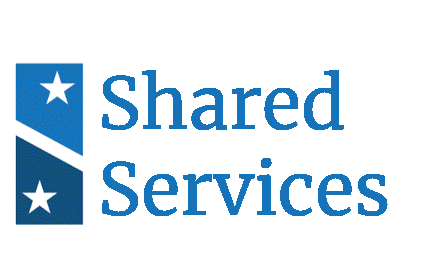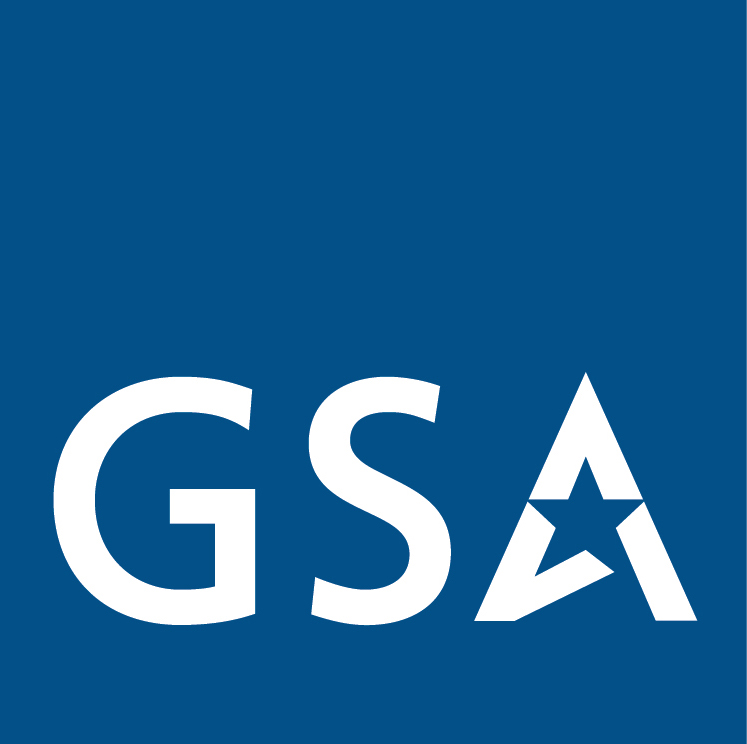Learn about Shared Services - https://ussm.gsa.gov/video-center/
- Shared Services is an industry best practice and model that can improve the effectiveness and efficiency of the Federal Government.
- State governments, nonprofits and businesses (including more than 90% of Fortune 500 companies) have improved effectiveness, increased capabilities, and reduced costs by adopting a shared services model.
- Standardizing capabilities, data, business processes and technology needed to streamline common administrative and business functions, leaders in these fields have found the greatest gains in efficiency.
- Reducing agency administrative burden–such as with processing financial and human resource transactions, accelerating high quality acquisitions, enabling travel–and securing the Federal enterprise through high-performing Shared Services enables agencies to devote more resources to strategic planning and most critical mission activities.
- Shared Services enable evidence-based decision making through access to reliable, standardized and just-in-time data for better management.
- Agencies with a common mission focus (e.g., Health, Law Enforcement, Regulatory) can benefit from their similarities in leveraging a shared solution rather than continuing non-value added uniquenesses.
- Shared Services can help agencies attain economies of scale through consolidating and modernizing technologies across the government.
- The Government-wide Shared Services initiative is designed to increase government efficiency, not eliminate jobs.
- Meeting agencies’ shared needs to support mission delivery through a marketplace of commercial and Federal services can help agencies save time and money, avail agencies of modern tools, and create a more nimble workforce focused on higher value work.
- The knowledge and expertise of Federal employees will be critical to its success. It is important the Federal Government retains that expertise, even if specific day-to-day activities evolve.
- As duplicated functions are consolidated over time, agencies have many tools available to help optimize, reskill and shift resources to higher value work.
- By focusing more time and effort on the core functions that fundamentally make one agency different from another, we are able to further develop deeper levels of expertise.
- Shared Services can bridge the current disconnect between the costly investment in administrative services and low satisfaction rates among Federal leaders.
- As stewards of taxpayer dollars, we owe it to the American people to spend them wisely. Each year the Federal Government spends billions on administrative services, but 38 percent of Federal leaders report low satisfaction with mission support services.
- Leveraging Shared Services will allow agencies to introduce innovations like robotics, data analytics, automation and continual improvement that drive further efficiencies and performance gains, while freeing up our workforce to focus on achieving their most critical missions.
- Change is difficult and we are just getting started. Achieving the benefits of shared services is a long-term effort that will challenge leaders to rethink their decision making.
- Lead agencies have been identified in each functional area, in partnership with their cross-agency community, to ensure every agency has the opportunity to contribute their own requirements to the enterprise-wide effort.
- Once the majority of the standards are agreed upon by the cross-agency community, it may be considered a good candidate for sharing. If there are regulatory or legislative reasons for something to be different for an agency, that will be addressed outside of the standards process.
- There is also a set of QSMO criteria, informed by industry best practices and many years of lessons learned, to guide the QSMO agencies as they stand up new service offerings. The role of the Shared Services Governance Board (SSGB) is to validate that those offerings align to the criteria and to help propose corrective actions when necessary.
- The governance board membership consists of two representatives from each Federal CXO management council, or the “voice of the customer.”
- QSMOs will institute a customer engagement and feedback model that allows for continuous improvement and performance management of solutions.
- QSMO Marketplaces are the central hub for the procurement of services and solutions within designated functional areas (Financial Management, Grants Management, Human Capital Management, and Cybersecurity).
- Agencies should engage with the QSMO to discuss their goals, business needs, and timeline related to new investments in a QSMO functional area.
- Agency procurements in designated areas conducted outside of established QSMO Marketplaces require QSMO and OMB agreement through the agency Investment Planning Process (IAP) and should be coordinated with your Agency’s Senior Accountable Point of Contact.
- QSMO Marketplace Solutions are already vetted for alignment to the same data and business standards in which your agency is participating and periodically evaluated to ensure quality and customer satisfaction. Providers are also required to automatically update their solutions to comply with new standards as they are released.
- QSMOs serve as subject matter experts within their designated area and have deep experience working with agencies to understand their needs. They also work with providers and industry to understand the direction of both commercial and Federal solutions.
- The QSMO, in their role as a broker to engage on a government-wide basis in supporting investments within their designated area, have advice and lessons learned to share with agencies in establishing supporting procurement and funding strategies for modernization. Agencies should not feel they are “on their own” to figure out an optimal modernization approach in designated areas such as Financial Management, Grants Management, Cybersecurity, and Human Capital Management.
- Agencies are also directed through policy and budget guidance to buy from a QSMO Marketplace in designated and pre-designated areas. No new solicitations for new or modernized technology should be issued outside of a QSMO Marketplace without conferring with the agency’s OMB desk officer and budget examiners as well the relevant QSMO. Should the need arise to issue a solicitation outside of the QSMO Marketplace, agencies should work with OMB and the QSMO to determine an appropriate path forward in coordinating a business case (or Investment Action Plan) for the same.
- The earlier in the planning, budget, and procurement process an agency engages with OMB and the relevant QSMO, the more likely it is that an agency will be successful in embarking on an appropriate path forward for modernization.
- OMB Memorandum M-19-16 directs agencies to not use new solicitations for new or modernized technology in designated or pre-designated areas without an approved business case. From M-19-16, page 4:
Once an agency is pre-designated as a QSMO for a particular set of mission support functions, agencies shall not issue new solicitations for new or modernized technology or services for these functions unless they have developed a business case, approved by the agency’s SAPOC, CIO, QSMO and OMB, to demonstrate that a separate procurement for these services results in better value, considering price, timeline and other appropriate factors.”
- OMB Circular A-11,page 700, Section 220.16 (Preparation, Submission, and Execution of the Federal Budget, August 2023):
What services fall under a pre-designated or designated QSMO that require QSMO and OMB approval for investment?
[…]
Some agencies may have an immediate business need while the QSMO is trying to get fully functional and prior to the QSMO delivering a suite of solutions and assistance to new customers. Agencies who wish to make any investments towards a functional area covered under either a pre-designated or designated QSMO are subject to review and approval by the QSMO.
If determined necessary by the agency, QSMO, or OMB, the agency and the QSMO will jointly develop an Investment Action Plan, also referred to as a joint business case, which must be approved by the agency’s CIO, SQS Senior Accountable Point of Contact, QSMO, and OMB. The joint business case must demonstrate that a separate investment for these services will result in better value for the Government, timeline, and other appropriate factors. More information on the Investment Action Plan, also referred to as a joint business case, is available at https://ussm.gsa.gov/qsmo/.
- Within the realm of Financial Management services and systems, M-23-06 (December 23, 2022) and OMB Circular A-123, Appendix D,
An aim of Appendix D is to support all federal executive agencies, including those not subject to FFMIA, in modernizing, standardizing, and harmonizing financial management systems by incorporating Federal financial management standards, and achieving alignment with statutory and regulatory requirements. An enterprise risk management framework should be used to achieve related financial management outcomes (e.g., clean audits, effective controls, and timely reporting). As the lead agency for federal financial management policy and standards, the Department of the Treasury (Treasury) supports these objectives through the promotion of a Financial Management Systems Marketplace, of standards-based solutions and services that allow flexibility, choice, an agile response to changing requirements, and data transparency.
- M-21-20 Promoting Public Trust in the Federal Government through Effective Implementation of the American Rescue Plan Act and Stewardship of the Taxpayer Resources, page 3 (May 19, 2021):
To reduce recipient reporting burden and consistent with OMB Memorandum M-19-16 Centralized Mission Support Capabilities for the Federal Government (Apr. 26, 2019), agencies are required to consult with the relevant Quality Service Management Organization (QSMO), prior to developing new or modernized technology, or considering an existing provider, to support execution of the American Rescue Plan.
- Investment Action Plan: Many of these policy and investment planning directives reference the need to establish a Business Case, or an Agency Investment Action Plan (IAP), that’s agreed to by the agency, OMB, and the Quality Service Management Office when an agency seeks to buy outside of a QSMO Marketplace.
- Guidance for drafting and obtaining OMB and QSMO agreement on an agency Investment Action Plan can be found in the Investment Planning Guidance released by GSA’s Office of Government-wide Policy.
- CFO Act agencies will also need to include their agency Senior Accountable Point of Contact and Chief Information Officer in this review.
- It could be a timing issue; agencies should contact the QSMO to ask about new providers or additional offerings in the pipeline.
- If an agency has a business need that cannot be met using a solution from the QSMO Marketplace, then an agreement between the agency, OMB, and the QSMO is required to proceed.
- Agencies should work with the respective QSMO on this documentation and the QSMO will coordinate with OMB for approvals.
- The documentation will also help QSMOs identify shortfalls and opportunities to expand offerings based on agency needs.
- GSA OSSPI’s Shared Services Team within the Office of Government-wide Policy is also here to support your effort. Please contact us at OSSPI.SharedServices@gsa.gov
- QSMO information is on the Government-wide Shared Services website.
- QSMO are currently designated in the areas of:
- Financial Management (Department of Treasury).
- Grants Management (Department of Health and Human Services).
- Cybersecurity (Cybersecurity and Infrastructure Security Agency).
- A QSMO is also pre-designated in Human Capital Management (Office of Personnel Management).
- Several agencies had early system modernization needs that predated the QSMO Marketplace and were approved by OMB to proceed in coordination with respective QSMOs to share lessons learned and ensure alignment with program goals and objectives.
- Similarly, some agencies may have existing contracting vehicles that include support for system upgrades.
- Agencies should assess existing contracting vehicles for systems and support and consult their respective QSMO to discuss new or recompeted acquisitions using QSMO Marketplace vehicles.
- Finally, as agencies set their strategic plans and long-term technology modernization roadmaps, they should engage with the QSMOs to better understand the vision in each designated area. Specific timelines for individual transitions are not set in policy. Rather, agencies are to engage with QSMOs to plan for the next phase of the technology or service prior to its end of life.


